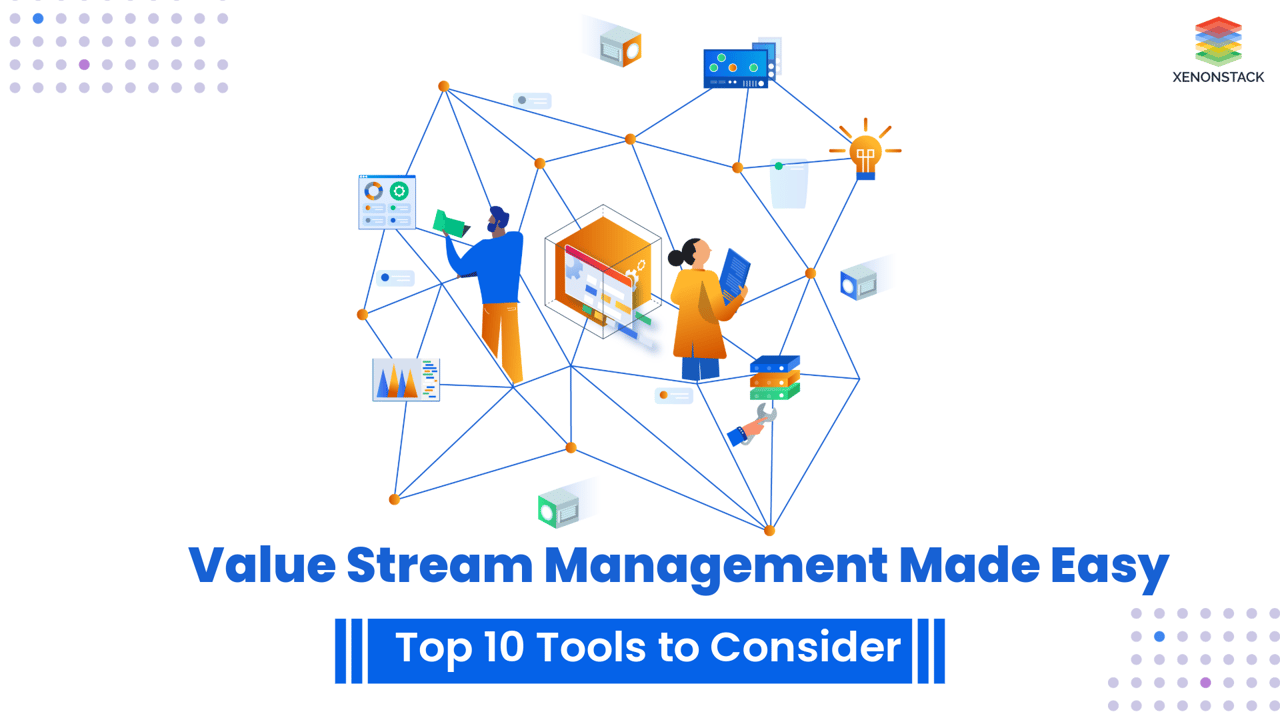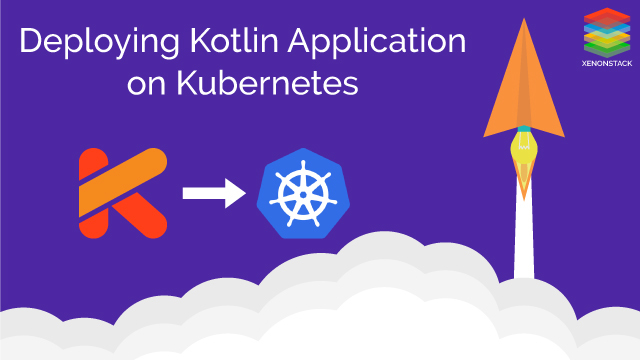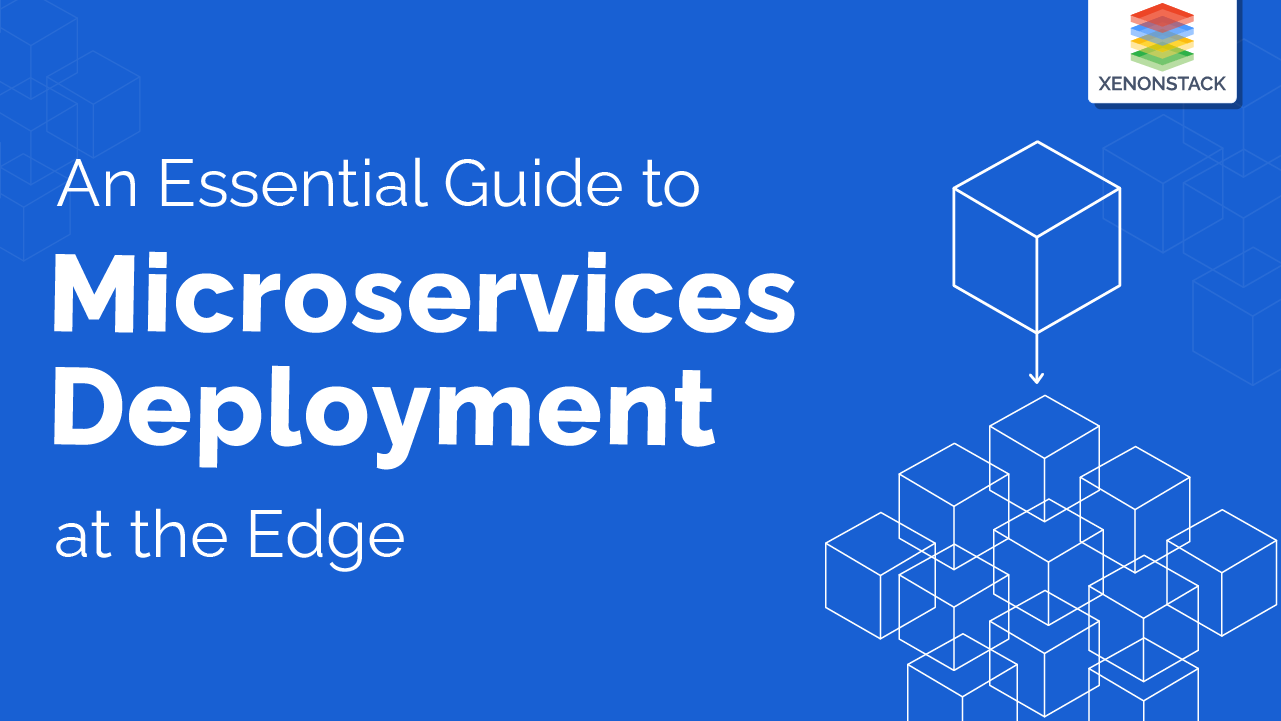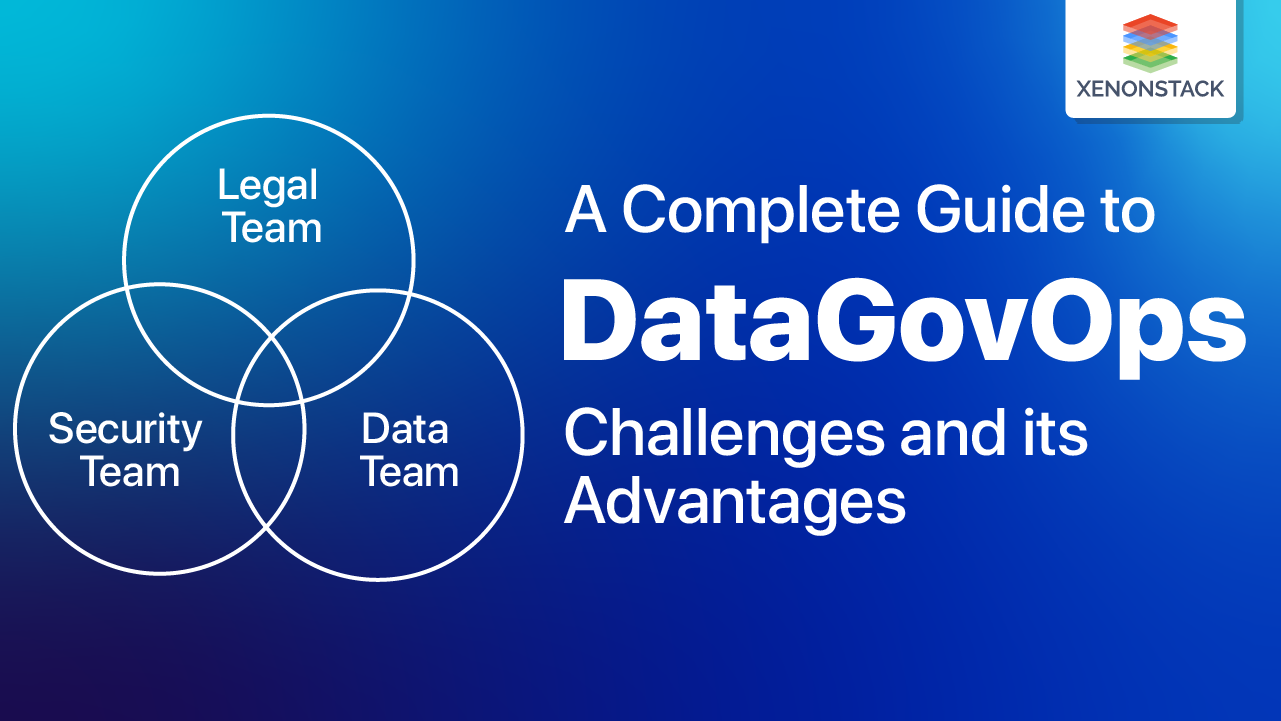
Introduction to Value Stream Management
The term 'value stream' describes the flow of information and materials to create value. An organization follows a sequence of activities to deliver its products to the customer, and The series is called the 'value stream'. The product can be software or hardware. Value Stream Management is not only crucial but a necessity. Software delivery organizations have different value streams for various products, applications or services. The value stream is unique for a software product. Value streams put the customer at the centre of the entire process. This helps the organization focus more on delivering customer-centric products, thus providing higher value. Value streaming also helps view the details of business processes in one single picture rather than viewing different parts separately.
What are the Major Challenges of Value Stream Management?
There is no way to physically see or observe the work done in the development process of software. There are no physical materials that move through the value stream. So, it makes it hard to manage the value stream in software development. The transition between two different work centres is somewhat informal in software development. The changes generally happen through email, phone, chat, or face-to-face meetings. These transitions are tough to trace efficiently. An individual has to report the development manually, and it can't be automated. Therefore, value streaming exists but only implicitly. It is neither visible, palpable or tangible, making it hard to understand.
Value Stream Management Tools: Why They Matter

Greater Transparency
Value Stream Management tools provide real-time insights into the entire workflow, allowing organizations to identify bottlenecks, inefficiencies, and areas for improvement. This visibility is crucial for making informed decisions and optimizing processes
.png?width=512&height=512&name=solution%20(1).png)
Improved Collaboration
These tools facilitate better communication and collaboration among cross-functional teams by integrating various tools and workflows. This alignment helps ensure that everyone is on the same page, ultimately leading to faster delivery of value
Value Stream Management Tools for Enterprises
The solutions for the above challenges mentioned are embedded in the tools. Software delivery practitioners use these platforms and applications to provide value to customers every day. The traces of the work in the value stream are kept within repositories. Software delivery practitioners integrate these tools, and this automates the workflow. Now, organizations can reveal existing value streams to customers. Platforms that provide Value Stream Management Services The tools required to manage the value streams are those used for Portfolio and Planning, road mapping, Requirements management, Agile Planning, Source control management, Issue tracking, Test management, Release automation, and IT service management. Some of these tools are:
GitLab
GitLab is a Value Stream Management Tool. According to Forrester New Wave, GitLab is a "Strong Performer" in the Value Stream Management. Being an open-source tool, GitLab combines end-to-end capability and provides more power. GitLab offers a separate DevOps tool for each step of the software development process. Excellent views across these tools provide us with its Value Stream Management functionalities. Gitlab is the first of its kind application, and it is for the entire DevOps lifecycle. Only GitLab enables Concurrent DevOps and unlocks the organizations from the limits of its toolchain. GitLab provides unmatched visibility, excellent efficiency, and complete governance.
Read More on Building Automated Testing Pipeline with GitLab CI
CodeBeamer ALM
CodeBeamer ALM is an Application Lifecycle Management platform that offers all-around capabilities like Requirements Management, Software Development, Testing and Quality Management, Risk Management, variants Management, and more. CodeBeamer provides Agile scalability and supports various safety-critical standards via already configured templates for the automotive and medical industries. Its features allow you to integrate Platform Lifecycle Management and Application Lifecycle Management and connect processes throughout the lifecycle while ensuring traceability and data consistency.CloudBees DevOptics
CloudBees Core is the only CI/CD automation engine that has the flexibility to support both the diverse software portfolios and the unified governance required by growing organizations. CloudBees DevOptics is the only Management tool that provides insights into the end-to-end application delivery stream, creating a holistic view of the entire software delivery process. With this valuable insight, companies can increase collaboration, identify Return on Investments in DevOps initiatives, and optimize their investments.Plutora
The most complete value stream management platform used for scaling Agile and DevOps to the enterprise with measured outcomes. Plutora is also recognized as a Strong Performer in the Forrester New Wave in Value Stream Management Tools. The Plutora platform co-relates and interconnects existing tools, which results in eliminating silos and increasing visibility, governance, and collaboration.
Read More about Release Management Process Flow and Tools
Blueprint Storyteller
The storyteller makes initiating complex agile software development easy by aligning business strategy and compliance with IT execution. This allows enterprise teams to drive innovation, reduce risk and waste, and unlock unrealized business value throughout the development lifecycle. Storyteller's software has the capability of integrating 40 common Application Management Tools to help extend their functionality, creating optimal software development experiences and ensuring Business and IT alignment across the entire toolchain.
Tasktop Viz
Tasktop Viz is a new offering compared to most other tools on our list, but that hasn't prevented it from quickly becoming a leader in the VSM tool space.
One of Tasktop Viz's main value propositions is visibility. It offers dashboards that provide live value stream visualization, leveraging a different approach to metrics it calls "Flow Metrics". With Flow Metrics, users can evaluate the benefits each value stream delivers, correlating that with business outcomes in real time.
ServiceNow
ServiceNow offers a unique approach to value stream management that's particularly strong regarding governance and compliance. Because of that, ServiceNow's suite of solutions might be particularly attractive to customers who operate in industries that are highly regulated. By leveraging ServiceNow's capabilities, organizations can automate much of their compliance and governance processes, forgoing manual sign-offs. All of that contributes to value reaching the end-user earlier and more reliably.
Digital.ai
Digital.ai's Value Stream Platform, formerly known as XebiaLabs DevOps Platform, offers enterprise clients control and visibility over their teams, tools, and processes. With this platform, organizations can evaluate how their software capabilities achieve their business outcomes. Digital.ai was one of the first vendors in the release automation space, so it has strong capabilities in that space.
Targetprocess
Targetprocess defines itself as an Agile portfolio and work management tool. It can help organizations in different ways. Firstly, it helps enterprises adopt and scale agile across the whole organization. Most importantly, when using Targetprocess, organizations can choose between established frameworks such as the Scaled Agile Framework (SAFe) and LeSS, or implement their own frameworks.
Quali
With its tools, Quali offers organizations solutions that cater to different needs. From DevOps cloud automation to testing environments as a service, Quali allows organizations to fulfill their automation needs, improve their release management processes, and deliver value to their customers more predictably.
How to Choose the Right Value Stream Management Tools
Selecting the appropriate value stream management (VSM) tool is essential for effectively visualizing, optimizing, and managing your organization’s end-to-end value streams. With many VSM solutions available, pinpointing the one that best meets your specific needs can be challenging. Here are several key factors to consider when making your choice:
-
Integration Capabilities - Value streams encompass various tools and systems throughout the software delivery lifecycle. It’s crucial to ensure that the VSM tool you select can seamlessly integrate with your existing DevOps toolchain, which may include source control management, continuous integration/continuous delivery (CI/CD) pipelines, issue tracking, test management, and monitoring solutions. Strong integration capabilities provide end-to-end visibility and help eliminate data silos.
-
Visibility and Traceability - A primary goal of value stream management is achieving complete visibility into the work flow from ideation to production. Look for a tool that offers real-time insights into work item progress, bottlenecks, and impediments throughout the value stream. Additionally, traceability features that track the lineage of work items from requirements to deployment are crucial.
-
Automation and Orchestration - Effective VSM tools should include automation capabilities to streamline processes, reduce manual efforts, and ensure consistency. Automated workflows, approvals, and notifications can significantly enhance efficiency and productivity. Furthermore, consider tools that support value stream orchestration, allowing you to define, manage, and optimize your value streams across multiple teams and projects.
-
Analytics and Reporting - Robust analytics and reporting features are vital for pinpointing areas for improvement and making informed, data-driven decisions. Evaluate tools that offer out-of-the-box reports and dashboards and the capability to create custom reports tailored to your specific needs. Look for advanced analytics capabilities, including cycle time analysis, lead time analysis, and value stream mapping.
-
Scalability and Flexibility - As your organization evolves, your value stream management tool should easily scale to handle increasing workloads and complexity. Consider tools that provide flexible deployment options, such as on-premises, cloud, or hybrid, to align with your infrastructure requirements. Additionally, seek tools that offer customization and extensibility to adapt to your changing needs.
-
User Experience and Collaboration - Value stream management involves various stakeholders from multiple teams and roles. Choose a tool with an intuitive user interface that fosters collaboration and promotes cross-functional teamwork. Features like Kanban boards, real-time notifications, and collaboration tools can improve communication and alignment across teams.
-
Security and Compliance - Depending on your industry and organizational requirements, security and compliance may be critical factors. Assess the security measures implemented by the VSM tool, such as data encryption, role-based access control, and audit trails. Additionally, tools that comply with relevant industry standards and regulations should be considered.
Why is Value Stream Management essential for IT Transformation?
-
Enhanced Speed and Efficiency - As competition increases, development teams must accelerate their workflows to meet customer expectations.
-
Coordination of Operational Teams - Value Stream Management (VSM) helps identify and better coordinate operational teams, crucial for effective process development.
-
Alignment with Agile Principles - VSM aligns software development closer to Agile methodologies, fostering improved planning and execution of projects.
-
Unified Understanding - Everyone involved in a project benefits from a "single version of the truth," enhancing confidence in the business plan and decision-making.
-
Identification of Process Flaws - VSM enables enterprises to quickly pinpoint faults in current processes, promoting continuous improvement.
-
Universal Visibility - With comprehensive visibility and management, developers can work without uncertainty, improving collaboration and efficiency.
-
Recognition of Application Development as Business-Critical - Companies understand the significance of application development in driving business success but often struggle to meet expectations.
-
Support for Business and Customer Needs - VSM supports the increasing importance of aligning business goals with customer needs across various industries.
-
Holistic Representation of Workflows - VSM provides a visual representation of dependencies, iterations, epics, and resources, enhancing understanding of the application deployment process.
-
Increased Business and User Value - By optimizing workflows and processes, VSM contributes to higher business and user value in application development.

Final Thoughts
Using value stream management, many organizations have led many enterprises to map out strategic themes, plan budgets appropriately and make it easy to adapt to rapidly changing business priorities. Visualizing work and achieving the ability to move business quickly and smoothly aligns with better software delivery and allows the developers to reach the results previously outlined. Now, the value stream management has become the heart of approaching DevOps.
- Read about Release Management Process Flow and Tools
- Learn about the Top Six Challenges In DevOps Adoption and Solutions



